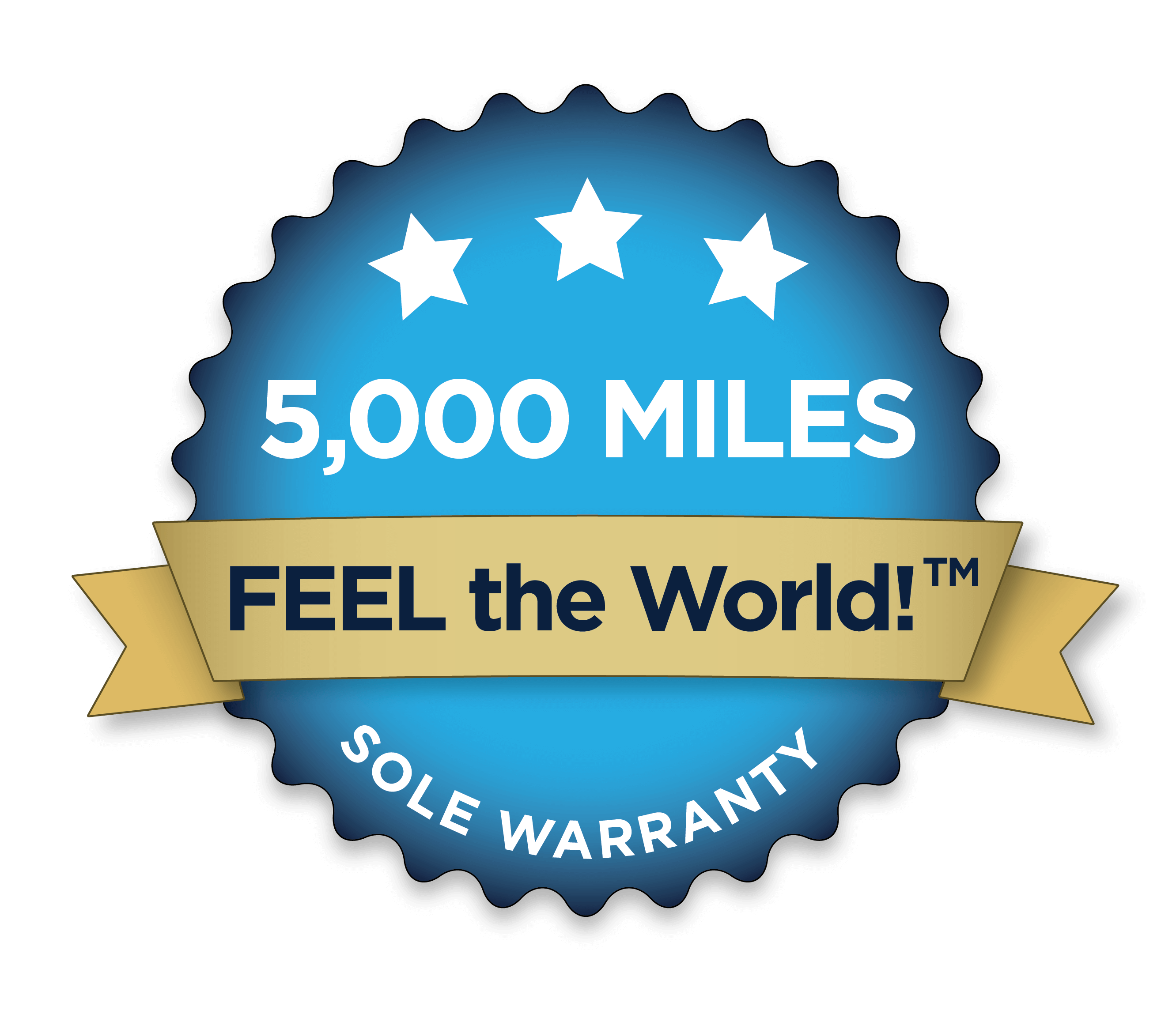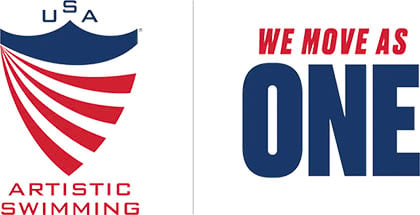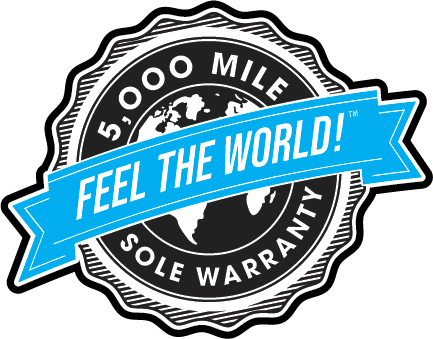Experienced barefoot runners find running barefoot light, easy, and fun.
If you’re not experiencing the same thing, or if you have various issues like blisters or soreness… you’re doing something different than the people who aren’t having those problems. If you wonder, “What might they be doing differently? What could I change to make this light, easy, and fun?” then you’ll probably figure out the answer (probably without knowing exactly what you figured out!) and find yourself running in the same way.
There are tips and ideas we can give you to help in that process, and that’s the point of this series.
In this post, I want to talk specifically about barefoot running sandals.
Barefoot running sandals, often called huaraches — the term that the Tarahumara use for the sandals they wear — can give you feedback that you don’t get from running barefoot.
In other words, just having a little bit of rubber under your foot can give you additional information about your running that, when you attend to it, will improve your running… again, making it faster, easier, lighter and more fun.
What’s the specific information I’m referring to?
SOUND.
When rubber meets the road — literally in this case — you hear something different than when skin meets the road.
So, here’s something you should know:
When you run in huaraches, you CAN run quietly… Sometimes even silently.
That is, A SLAPPING NOISE IS NOT A FEATURE. It’s a pointer to something going on with your form that, once you address, will not only make the sound go away, but should improve your form.
Sound is a cue. If you’re not running quietly, the question is: “Knowing that others run in sandals without making slapping noises, what could I do differently to get the same effect?”
Slappy story #1
To help you find an answer, let me share a story I got from one Xero Shoes customer, Ron, who was hearing a slapping noise when he walked or ran.
I give him my usual suggestions (which you’ll see below), and he called me back a day later.
“I noticed something interesting,” Ron said, excited about his discovery. “When I ran up a hill (even a slight one), the noise went away! I’m doing something different with my feet when I go uphill.”
“PERFECT!” I responded. “So, the next time you go out for a run, wonder what might be different about your gait when you’re going uphill, and see if you can get that same thing to happen on a flat.”
Ron called back the next day even more excited.
“I figured it out! I can run quietly now!”
I asked what he discovered and, happily, it was everything I recommend to people in this situation:
- When he went uphill, he put his foot UNDER his body more, rather than reaching out with his foot at all
- Went he went uphill, he placed his foot on the ground so that it “met the ground”, rather than dropping it onto the ground
- When he placed his foot, he landed with more of a midfoot strike, almost flat-footed.
- He didn’t try to land on his foot, but to have his foot moving when it contacted the ground.
- His “spring” was softer — that is, he flexed his ankle, knee and hip more when he was going uphill, instead of landing with a rigid spring.
Here’s the fun part: After noticing these things, Ron didn’t consciously do anything different when he got onto flat surfaces… but the sound had gone away. His body/mind figured out the solution for him.
A second slappy story
Now, some people need to be a bit more deliberate, and experiment with different ways of moving, but often just wondering and noticing is enough to create change.
Here’s another story that highlights the same thing:
Jason (definitely not his real name) came to the office to get a pair of Custom-Made Xero Shoes. He told me that he’d been running barefoot for 15-20 miles/week for the last 5 years.
“Every now and then, though,” he confessed, “I get some pain in the top of my foot or in the bones near my forefoot.”
“Oh,” I said, somewhat offhandedly as I made his shoes, “You overstride.”
“No, I’ve been doing this for a long time. I have good form.”
“I hear you,” I replied, “but I’m willing to bet you overstride, that with the idea you should land on your forefoot, you’re reaching out with your foot. In fact, I’m willing to bet that as soon as you put these sandals on, you’ll discover the same thing.”
“How’s that?” he asked.
“You’ll hear a slapping noise when your foot hits the ground.”
Sure enough, he put on his shoes and we went for a run and with every one of his steps, you heard “Slap Slap Slap Slap.”
He was shocked, but I wasn’t. It’s not uncommon that barefoot runners have some form problems that they don’t notice… just like any runner. In this case the sandals pointed out the problem.
“Hey!” Jason said, looking at me as we ran together, “You’re not making any noise.”
We stopped and I gave him the cues that I’m about to tell you. Within 5 minutes, his running was totally quiet. But there was another benefit.
Looking almost confused, Jason said, “This feels totally different than what I’ve been doing for the last five years!”
“How so?”
“Easier, lighter, stronger… like I could keep going forever!”
BINGO!
Me, me, me, me, me
I know that the stories above suggest that all slapping noises are caused by form. And, frankly, that’s true 99% of the time.
The other 1% is if your sandals are tied WAY too loosely.
When you tie Xero Shoes, they should be comfortable. Definitely not tight.
And while it’s true that if they’re way too loose, that could increase the chance of making slapping noises, if you walk or run with really good form, even having your sandals practically falling off your feet won’t cause noise.
But, if your form isn’t perfect yet, then you may want to try tightening the lace a bit (again, if they feel too tight when you do that, you’ve gone too far).
So, assuming too-looseness isn’t the issue…
De-slapping
So, here are the recommendations for “de-slapping” your running:
- Simply wonder, “What could people who run quietly be doing that I’m not?” and then experiment with your gait
- Feet under you — Rather than overstriding, don’t reach out with your foot. Place your foot closer to “under” your body. Exaggerate this for a while if you want to, as if you could place your foot behind you when you land
- Be soft — think of your lower body as a spring… from the foot, through the ankle, through the knee, into the hip.
- Catch the ground — rather than “landing” on your foot, imagine that the ground is a treadmill, and you have to “catch” the moving ground under you with a moving foot. So your foot contacts the ground as it’s already moving
- Try new foot placements — some people land on the ball of their feet. Others land midfoot. Some land flat-footed. Experiment and see which feels right for you. Notice, by the way, that how you land may change depending on whether you’re going up or down hill, accelerating or decelerating.
- Run uphill — feeling the difference as you run uphill may, like Ron, help you discover how to run quietly
Here’s my favorite tip, though:
- MAKE NOISE! — one way to stop making noise is to deliberately make noise so you understand where the noise comes from. You want to prove to yourself that overstriding causes slapping? Simply run fast and then try to stop quickly — to stop quickly you have to overstride. I bet you hear slapping noises. Want to prove that a “tight spring” could make noise? Pretend you have no knees for a few strides and see what happens when you land almost straight-legged. Get the idea?
Let me know what you discover in the comments below.











 Fostering honest and responsive relationships between businesses and consumers.
Fostering honest and responsive relationships between businesses and consumers.














I have two pairs of huaraches, best shoes ever and have kept my reputation up for the kid with weird shoes:) I love them so much I try wearing them 24/7, yes even to my senior year prom ill send in pictures, also love how you can chagne the tying style daily and they are worth the price!
I’ve tried every thing (I believe) you’ve said and I still have a lingering Achilles pain/burn (6 months now) in the back of my heel about 1 inch off the ground, ugg!!
Hi Phil,
I haven’t written anything yet about Achilles and calf pain (but I intend to). The short version is this:
a) I’m not a doctor, so take this as just my experience (you may want to see a barefoot-informed doctor).
b) Achilles pain can come from overuse/strain, which can come from: trying to keep your heel off the ground, overstriding while landing on your forefoot, pushing off the ground too much rather than lifting your foot off the ground by flexing the hip. The solution there is, basically: RELAX, use less effort, try landing more flat-footed.
c) Sometimes Achilles pain can be caused by too-tight calves, which you might be able to address with foam rolling (look up “foam rolling calves” on Youtube) and stretching.
d) All of the above can be exacerbated by simply doing too much too soon. You may need time to let the inflammation settle down first, and then start SLOWLY… just a few hundred yards. If that feels good, then add another 100 yards. If at any time you end up in pain after running, rest, back off your distance, and experiment with finding ways to use less effort, have more fun, and be lighter/easier.
Also, often overpronation causes the Achilles tendon to be out of center position and each step you take it “rubs” across the heel bone, gets inflamed. (I know that, because it has happened to me). Strengthening the tibialis posterior will stop overpronation and then the Achilles tendon will calm down. The ankle flexibility maybe be a big issue as well.
Would having sore outer hip/glutes (not joint pain) be an indication of over-striding? (Waiting on Xero order; been running with NB Minimus Trail/Correct Toes & Toe socks alternatively with Vibram FF shoes. Chi running style.)
Hmm… hard to say from just an email. It could be that you’re actually USING your glutes more than before and just sore from doing too much.
yeah, my first pair, and I was assuming looseness was the reason for the slappiness when even just walking. I was thinking these things were unfortunately going to be just as slappy as typical sandals. I’m a bit skeptical, but I’ll give it a try to see if I can learn to de-slap.
It *could* be looseness, but that’s rarely the issue. If you’re getting slapping noises when you’re walking, it’s usually from kicking your foot out too far, landing on your heel, and then, well, slapping your foot down 😉
Of course, you can play with tension.
I’m a slapper! I love my Xero’s and am trying to build up mileage in them but just over 2 miles the skin on the bottom of my toes starts to hurt from rubbing, I’m also a sweater, so my sweaty feet (<– TMI) start sliding around also creating more friction, then I have to wait a few days for the skin to stop hurting so i can try again 🙁 Thanks for these tips.! I can't wait to try. I'm certain my form is wrong, as I'm accustomed to heavily cushioned, structured, big dollar running shoes for long distance running. I would L o v e to retire those heavy clunkers (except for winter running) and be able to run a marathon in Xero's 🙂
Hi Slapper, I mean, Rebecca 😉
Something to ponder: sweating doesn’t make your foot slide if you aren’t overstriding or pulling/pushing. We know lots of people (me included) who run through streams. Wetness only highlights an existing issue.
Make sense?
I know I’ve got some crazy form. Now this morning, thanks to your article above, I was able to eliminate the slapping noise from my left foot, but my right side has a mind of it’s own, I did break that leg while I was a growing teen which made it grow slightly faster than the other side, so my right leg is a smidgin longer than my left also resulting in a crooked back, not visibly noticeable, thank god, lol. I slowed way down and shortened my stride. I’ll keep working on it, THANK YOU for sharing your time and attention with your customers, that’s so darn nice of you! 🙂
I *LOVE* “unilateral form issues” (things that only happen on one side of the body). Why? Because they let you know “It’s POSSIBLE do get my ‘bad’ side act like my ‘good’ side.”
See http://www.xeroshoes.com/blister for a story about my unilateral issue (you may find it helpful)
Gracias Amigo! Another great read! All of my running related issues manifest on the right side. So true, I will listen for feed back from me feet. I also see from my photo above that it looks like the right sole could use a trimming down, looks too long……
Any chance of getting your recipe for tying your shoes Rebecca? Love what you did here…
Hi, sorry, I just your your post now. Well… it’s kind of hard to describe but I took the long section of lace that is left after the final know in the top center of the foot. I extended it down along side the lace that goes between the toes, and as you can see just a short distance up from the toes, is where you start, I just sort of looped/weave the lace back and forth through these two side-by-side laces, in a figure 8 sort of pattern heading back towards the ankle, to the middle knot and then finish off the rest along the little side portion on the outside of the foot. I just came up with this on my own, so it’s hard to describe without actually showing it being done. I hope you found a lovely way for yours.
~ Rebecca
Time for a You tube video with a nice link, eh?
Rebecca, I LOVE the way you tie your Xero’s!!
i slap, but mainly cause i made my “invisible shoes” … not all that great, so they don’t fit right, i figured it must be the looseness since they do leave my feet a bit when i run lol
cause it REALLY isn’t my form, i promise…just gotta make them better 😀
of course, my current pair need to die first…hasn’t happened in the 3 years i’ve had them 😀
Thanks for a fantastic article, Steven, and for continuing to update your site with excellent knowledge and encouragement. I haven’t visited since receiving my Xeros in February — I happily use them 90% of the time — and I sometimes hear “irritating slapping” when I run (and even walk), and in response I have just been tying my laces tighter and tighter — actually leaving “too tight” marks. So with this article I see the slap-free light, and will continue working on my form with a new zero-slap focus. Thanks!
Firstly I LOVE these shoes. I wear them 24/7. All day long and whenever I run. However. On long distance I can easily hide the sound they make. But when I’m trying to beat my personal best time on a 5k course. It seems helpless. I’ve tried everything. I’m not that bothered mind. I’ve even put headphones on a few times to muffle out the sound. My form feels great at slow speed and I am able to throw down a million more steps then my neighbour runners. When running at speed you just have to stride and slap.
Hi Jay,
FWIW, what you’re describing suggests that at your top speed you’re overstriding a bit, or simply “landing” on your feet rather than having your feet moving at the same speed your body is moving across the ground.
That is, it IS possible to run just as quietly at full speed as it is to run at slower speed.
Whether you care to spend the time to experiment and discover how to do so is up to you.
Hi Steven, yes I do care and will continue to work on my form. Thank you for your interest in my post. I will be purchasing a pair for my three year old later this evening. If only I had these when I was that age.
All the best
The slapping — Could another way to address it by saying, shorten your stride? Quicken your cadence?
If overstriding is the cause of the slapping then, yes, shortening your stride or quickening the cadence could help since both of those tend to eliminate overstriding.
Just found this Blog. Got my Xero Amuri Clouds today (I’m in the UK) and have been for my first run in them. Great experience, apart from the slapping, but you have pointed the way on that. Interesting that my right foot was slapping louder than my left, so likely a form issue. Work in progress. Thx.
I LOVE when I have a problem on one side and not the other, because that shows that it’s DEFINITELY form-related. And if one side can do it correctly, then there’s no reason the other can’t as well!
😉
Wow, quick response from the CEO –I’m impressed. If I may make a jocular aside: I’m not sure that these Xeroes are so good for my running form –I had to keep looking down to check they were still on my feet. If it weren’t for the sound I would not have known 🙂
LOL (about the advantage of noise, not about me replying ;-).
You know, you’ve raised an interesting point. When you put on shoes of almost any kind, you naturally adjust your gait because of the weight and the sensations on various parts of your foot.
But because Xeros are so light, and don’t restrict your feet, some people bump into an issue by walking as if they have NOTHING on their feet (e.g. dragging their toes, which they would never do in any other footwear).
Oh, and we’ve had more than one report of people getting into bed while still wearing their Xero Shoes 😉
Nice one! On an unrelated note, may I just say that the service/delivery I received from your UK distributor was excellent. I also liked the fact that the package could be slipped through my letterbox and I didn’t have to answer the door.
I need help!
I have the DIY 4mm sandalls and I always tought the slapping noise was annoying. Then I found this article. I was pretty pumped thinking I’d finally get rid of the noise. But I’ve been trying for a week now and to no aval. I can walk silently no problem but as soon as I start running even in the slightest the slapping starts. I tried landing in all position of the foot, tried to shorten the stride, tried going uphill, tried controlling the descent of the foot so as not to let it fall to the floor. Nothing works. I tried out of desperation to tighten the sandals and it reduces the slaps just a bit, but now the sandals are way to tight and the rope hurt my feet… I don’t know what to try anymore.
If the sound is EXACTLY the same whether you’re going uphill, downhill, on a flat, accelerating or slowing down, or running up or down stairs…then something odd is going on, because it’s not possible to put the same amount of force into the ground doing each of those activities, and the only thing that creates excessive sound is excessive force.
Remember that LEARNING happens in between bouts of trying something new. That is, the pattern of change looks like this: Experiment – Rest – Improvement – Repeat.
We’re happy to look at a video if you think that would help.
Well I’ll keep trying some more. If I really can’t fix the slapping I’ll send a vid. In the meantime what would be really helpful, not just for me, would be if you could post a video of your own to visually show the technique. It would help too by letting us hear what kind of sound should be heard, even if very small.
Thanks!
It seems better when I voluntarily “spread” my feet and land more on the outer side and middle of my foot instead of the front.
Is it possible that the slapping noise is related to shoe length/construction technique? I want to be able to wear socks with my sandals, so I positioned the toe strap right at the end of the shoe, in front of my toes rather than between them, and used the rest of the lace to secure the shoe in place around the heel. However, this means the front of the shoe doesn’t flex when my toes flex. Could this be causing the slapping? Can I learn to walk without a slap with this lacing style, or do I need to change the position of the toe slap?
I’ve never seen a situation where slapping isn’t related to form. Send us a photo, though, if your curious about your unique tying style.
I think I’ve fixed it! I tightened the front strap so that the sole curls up slightly in front of the toes. That seems to work well.
can you post a video on how to walk/run quietly with them? mine still have that slappy sound even if i’m running in place so it can’t be from overstriding
I’ll try to make one soon. If you’re running in place and making noise that could simply be from the force you’re putting in the ground… almost ANYTHING can make slapping sounds if you hit it hard enough ;-)… relax your knees and use your hips more to make the sound go away. Similarly, see what happens when you run up hill. In other words, experiment and see what you discover as a way to get quieter and, most likely, that will be a form improvement.
Steven, Love the advise. Focus on form, not for very long, as it will feel natural once your get it going again, no matter how tired you feel. My run was too long, but held form most of the way. When I started to lose form, because I tired, I reminded myself: “Don’t break form!” Keep those feet under you and stay off the heels. The finish of the run was excellent. Just so you know, I am 71 years old and getting ready for the event so I can place in my age group in the Door County Triathlon in July… sprint distance. The pool swimming really kicked my butt after the run was done. Form more info look at the Facebook posting of Steven and I have a chat. Turn up the volume.
I get a clapping noise even just hopping on the spot. My sandals are tied very tight: they don’t move at all when I shake my foot. I’m using an amuri toe loop, is that the reason?